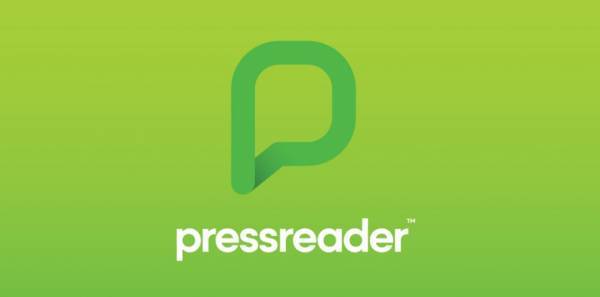Uncovering New Strategies to Grow Enrollment
By Lynda Hamilton-Kirk
Increased customer focus and product innovation audits are commonplace among Fortune 500 companies, but how do those strategies relate to independent schools? Surprisingly, some schools are now looking to companies such as Apple, Disney, and VaynerMedia for inspiration as they lau...
Uncovering New Strategies to Grow Enrollment
By Lynda Hamilton-Kirk
Increased customer focus and product innovation audits are commonplace among Fortune 500 companies, but how do those strategies relate to independent schools? Surprisingly, some schools are now looking to companies such as Apple, Disney, and VaynerMedia for inspiration as they launch innovative products—such as niche academic, co-curricular and experiential programs—and to grow their brands through powerful marketing. Fortune 500 companies and independent schools are more alike than you may think, both clamoring to differentiate their offerings in a very competitive market.
Demographic shifts and economic trends have put unprecedented pressure on admission at independent schools. The cost of full tuition lies within reach of a fragment of the population, and even families in the highest income brackets can now choose charter schools, online instruction, or other modified educational options—many of which offer project-based and personalized learning at little or no cost. How can independent and boarding schools continue to enroll talented students?
In the face of these structural demographic and economic shifts, some tried-and-true strategies are falling short. Familiar approaches, such as international recruitment, are failing to address the new realities of the independent school market. Rather than a five-year strategic plan, schools need boards and administration that are forward-thinking and iterating to ensure they stay competitive and bring the best educational experience to their students.
The Changing Landscape
Between 2012 and 2060, the proportion of the population under the age of 18 is expected to drop from 23.5 percent to 21.2 percent, according to the Enrollment Management Association (EMA). The number of independent school graduates between 2012 and 2032 is expected to decline by 26.5 percent. The shrinking population of school-age children, coupled with a widening wealth gap, constricts the applicant pool for independent school admission. The median day school tuition in 2013–2014 was already 44.4 percent of the median U.S. income, according to EMA, and, like the costs of higher education, tuition typically rises faster than the rate of inflation. Many millennial parents are already deep in debt, often from the high prices of their own educations, and are increasingly more cautious about the investments they make in institutions. At the same time, families have the opportunity to choose from a growing number of low- or even no-cost alternatives to public schools. Tellingly, in 2016, some 22 percent of NAIS schools did not achieve their enrollment goals, and only 52 percent of NAIS schools met both enrollment and net tuition goals.
Consider the model developed by Ron Heifetz at the Harvard Kennedy School of Government: In The Practice of Adaptive Leadership: Tools and Tactics for Changing Your Organization and the World, he distinguishes between technical and adaptive challenges. Technical challenges test strategy and execution without calling into question any fundamental assumptions; solving problems involves implementing policies rather than rethinking attitudes. Adaptive challenges, however, demand creative and critical thinking; being flexible matters most. Thus, independent schools not only face the strategic challenges of generating business in a crowded and contracting market but also must question the very nature of established business models and methods.
Exploring New Geographies
The adaptive challenge facing independent school admission requires shifting away from a mindset of scarcity toward one of abundance—finding more prospective students and families in an untapped market. As reported by EMA, The Association of Boarding Schools (TABS) started collecting enrollment data from member schools in North America. The early research indicated that 40 percent of domestic students attended boarding schools in their home state or province; another 27 percent attended adjacent schools. Further, the data confirmed that 75 percent of North American boarding students hailed from just 10 states or provinces. As a result of TABS research, in 2016, The Hill, an independent boarding and day school in Pottstown, Pennsylvania, engaged a geographic information systems specialist to identify an expanded recruitment market. The goal was twofold: to understand traditional student recruitment pools and to find areas outside of the current targets that may be receptive to the boarding school lifestyle.
The following year, The Hill took strategy cues from 2017 best-seller Blue Ocean Shift: Beyond Competing—Proven Steps to Inspire Confidence and Seize New Growth. In this book, the authors define “blue oceans” as untapped markets and unidentified opportunity. The school’s admission strategy now relies on data-driven mapping that uncovers possibilities for recruitment beyond its traditional prospective student pool in the Mid-Atlantic and Northeast—expanding the area of focus to at least 15 additional urban regions. It also transitioned a current admission officer to become a satellite agent who travels to areas where families may be more inclined and possess the resources to choose The Hill.
Though this strategy is just two years old and still being tweaked, The Hill enrolled a record high of 525 students, an increase of 23 students during this time period. This year, students represent 28 states, up from 25 states the prior year.
Appealing to Prospective Students—Not Just Parents
Although schools have almost always focused on appealing to parents, we know that students in Generation Z often drive decisions about their education. Pragmatic and practical, this generation is motivated less by passion than a calculus of risks and rewards. By designing, promoting, and publicizing more responsive pedagogies, independent schools can bring out the best in Generation Z while reassuring millennial parents their investment will pay dividends beyond admission to a top college and entry into a high-paying career. Hill admission officers and the satellite agent can reach past the core constituencies, expanding the school’s geographic reach to very particular communities, where they speak directly with students—not just their parents—during fairs and schools visits.
When reaching out to potential students in new markets, The Hill connects its mission to the interest of the student: The school has developed programs tailored to Generation Z, focusing especially on engineering and technology. Marketplace analysis in Fall 2018 revealed this would be a differentiator as other schools were not offering a four-year progressive engineering program at the high school level. The engineering and technology courses are fully integrated with the school’s liberal arts curriculum, following best practices of engineering programs at the college level. The Hill’s traditional commitment to the liberal arts incorporates the innovations in technology, programming, and engineering to resist the tendency to pre-professionalize secondary school while cultivating 21st-century skills. Each year, The Hill hosts admission showcases in new target markets to introduce the program and top engineering students to a broader audience.
Ultimately, schools must model the learners they aim to create by being critical and creative, and dedicated to continual improvement through meaningful learning experiences and authentic assessment. Independent schools need to remain nimble and anticipate trends, rather than just reacting to them. What we teach, we first must learn.
AUTHOR
Lynda Hamilton-Kirk
Executive director of strategy management at The Hill School (PA). #InterestingArticles
Read more
6+ mins read
loading.....


 Share on X
Share on X









